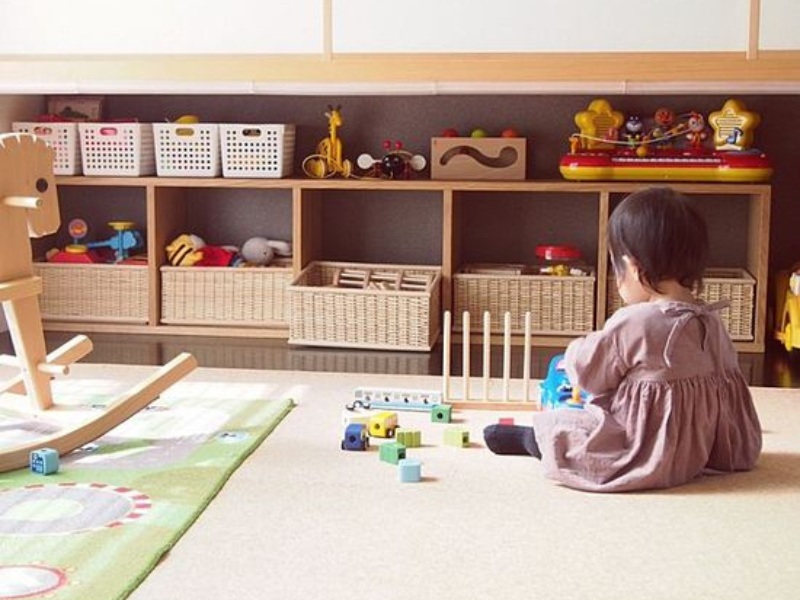Creating an engaging playroom for children involves thoughtful planning to ensure it’s not only fun but also functional and safe. Here are some tips to help you design and organize an inviting play space where kids can learn, explore, and play freely:

1. Designate a Dedicated Space
- Purposeful Area: Choose a room or section of your home that is spacious enough to accommodate various activities.
- Accessibility: Ensure the playroom is easily accessible and visible to supervise children while they play.
2. Choose Age-Appropriate Furniture and Decor
- Safety First: Opt for child-friendly furniture with rounded edges, sturdy construction, and non-toxic materials.
- Colorful and Stimulating: Use vibrant colors and themed decor that spark creativity and excitement.
3. Create Zones for Different Activities
- Play Areas: Designate separate zones for activities such as reading, arts and crafts, building, and pretend play.
- Storage Solutions: Use bins, baskets, shelves, and labeled containers to keep toys and supplies organized and accessible.
4. Include Interactive Learning Stations
- Educational Toys: Incorporate toys that promote learning, such as puzzles, building blocks, STEM kits, and educational games.
- Reading Nook: Set up a cozy corner with a bookshelf, bean bags or cushions, and good lighting for reading.
5. Encourage Creativity and Imagination
- Artistic Expression: Provide art supplies like crayons, markers, paints, and easels for creative expression.
- Dress-Up and Role-Play: Include costumes, props, and a play kitchen or tool bench for imaginative play scenarios.
6. Safety Measures
- Childproofing: Install safety gates, secure heavy furniture to walls, and cover electrical outlets to ensure a safe environment.
- Soft Surfaces: Use rugs or foam mats to cushion floors and prevent injuries during active play.
7. Create a Sensory-Friendly Environment
- Textures and Materials: Include sensory toys like textured balls, musical instruments, and sensory bins filled with materials like rice or sand.
- Lighting and Sound: Consider adjustable lighting options and soft background music to create a calming atmosphere.
8. Interactive Technology
- Educational Apps: Integrate kid-friendly tablets or devices with educational apps that support learning through interactive games and puzzles.
- Screen Time Balance: Set limits on screen time and encourage a balance with hands-on activities and physical play.
9. Personalize the Space
- Child’s Input: Involve your child in decorating decisions to reflect their interests and preferences.
- Display Artwork: Showcase their artwork and achievements on a designated art wall or bulletin board.
10. Rotate Toys and Refresh the Space
- Variety: Regularly rotate toys and activities to keep the playroom engaging and exciting.
- Seasonal Themes: Update decor and activities based on holidays or seasons to keep the playroom fresh and inviting.
Conclusion
Creating an engaging playroom involves designing a space that stimulates creativity, encourages learning, and provides a safe environment for children to explore and play. By incorporating age-appropriate toys, interactive learning stations, and thoughtful organization, you can create a playroom where children can thrive, learn, and have fun for years to come. Remember to prioritize safety, encourage imaginative play, and adapt the space to your child’s evolving interests and developmental needs.

